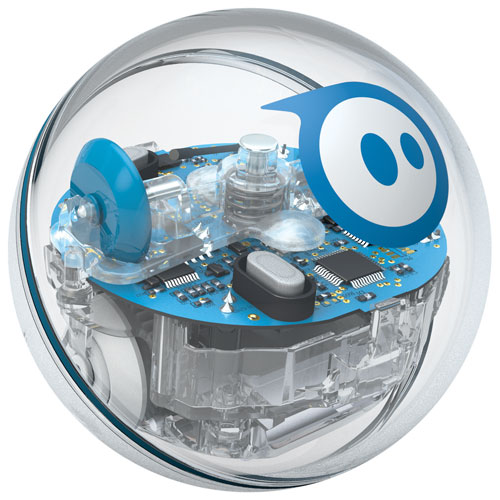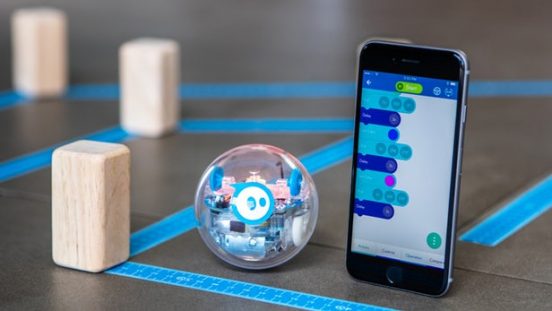Well blog readers, first I built a computer, and now I’m playing with educational robots! Who am I? I don’t know about you, but I’m loving the more technologically advanced person I am becoming.
A Sphero Robot is a small circular device which runs by computer programming. We learned all about programming in our ECI class, and our challenge was to first debug an already existing program.
Learn more about SpherosYou might ask, what on Earth does that mean?! By using pattern recognition with our Spheros, we were able to test their pre existing programmed paths and debug them. They were programmed with a bug, meaning they wouldn’t follow their path exactly correctly. Our Sphero, for example, went left at a specific turn rather than going right. By changing the programmed angle measurement, we were able to debug Sphero and lead him on its correct path.

We did another assignment with Sphero where we had to create a path resembling campus, with tasks leading the robot from class, to a dorm building, to a dining hall. We had to completely code the computer programming, and we did so with a whole lot of trial and error! I had to completely alter the angle, direction, and speed of Sphero in order to get him to stop at each place he was intended to. This proved to be a bit challenging, as little things such as bumps in the carpet can ruin its preciseness. My partner and I felt so good after we accomplished this task, however! This is a perfect example of how Sphero can be used in a classroom setting. This assignment could be adapted for a younger group by adding less stops, or making it a bit more child friendly. Instead of doing a college campus, younger students could do their school day! Sphero disguises learning by doing so in such a fun, and interactive way.
Sphero- From club to classroom
https://hse21shorts.com/2015/04/15/sphero-from-club-to-classroom/
I already talked about how using Sphero used computational skills such as testing and debugging, but the opportunities to advance these skills are endless. It was essential to use decomposition with our assignment by looking at the map we made piece by piece, rather than as a whole. By doing this, if we ran into a problem we could pin point exactly where it occurred and fix it rather than becoming overwhelmed. This is important to learn in a classroom setting so that students avoid becoming frustrated if the whole project goes not as planned. This skill can also be applied to test taking strategies. If a student doesn’t understand one question, they should move on to another question, rather than assuming they won’t get any of the other ones and giving up. Every aspect of computational thinking can be applied to an elementary classroom. I hope you enjoyed hearing about my experience with Sphero, and hearing me grow technologically in each post! Below I have linked a video with additional information on computational thinking!
How it can be incorporated in the classroom
I’ve done a bit of research on activities that can be used with Sphero in a classroom setting! Here are some of my favorite ones I found.
- Creating a Sphero obstacle course to navigate him around, using creative tools such as bridges, mazes, and other fun challenges.
- A way it can be used in an english class could be to relate it to a book (for example, The Maze Runner). While reading, the class could make a “maze” for Sphero to get out of in a certain amount of time!
- Programming Sphero to go through a path (sheet with numbers), only traveling through the prime numbers. This is a great way to use coding skills, and also review a math concept! Also, this is a way to engage slightly younger students.

Computational Thinking
Computational Thinking by Paxton/ Patterson on Youtube

Comments by tiaffema